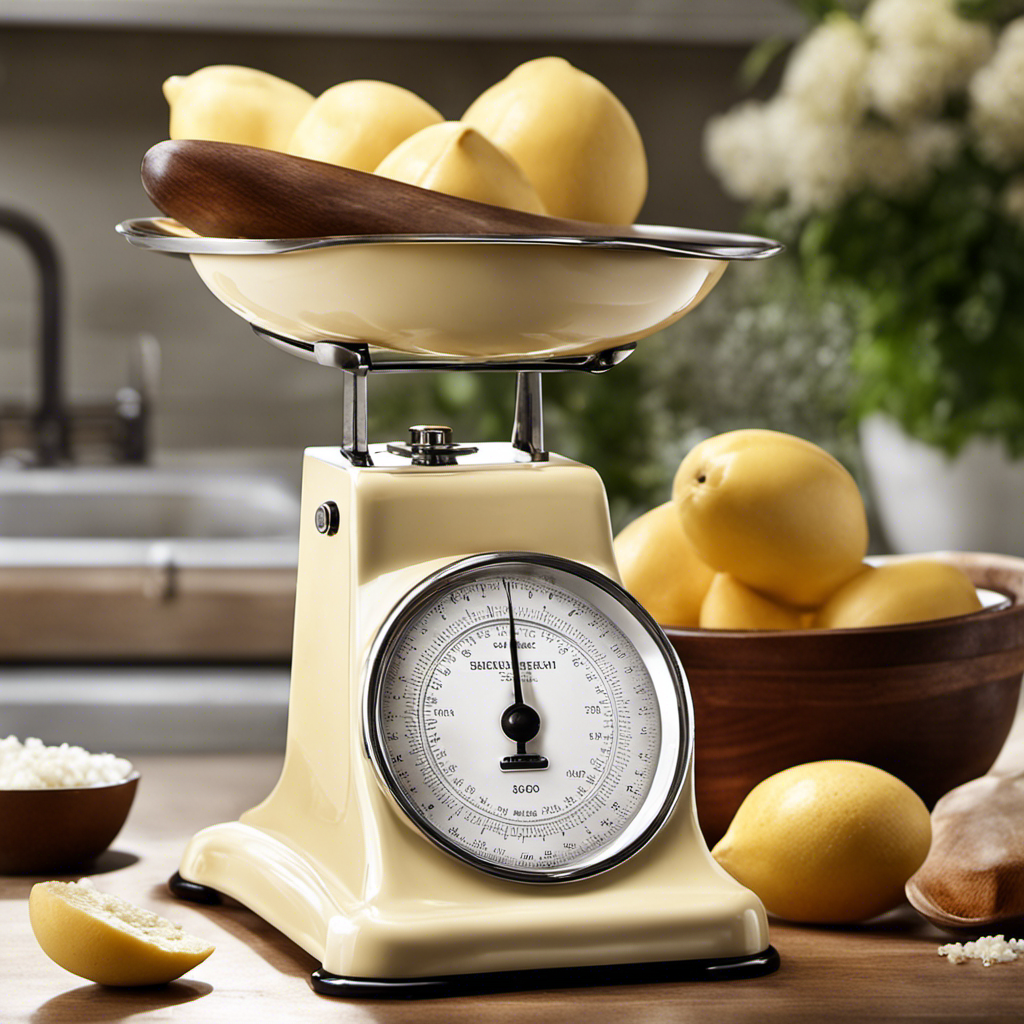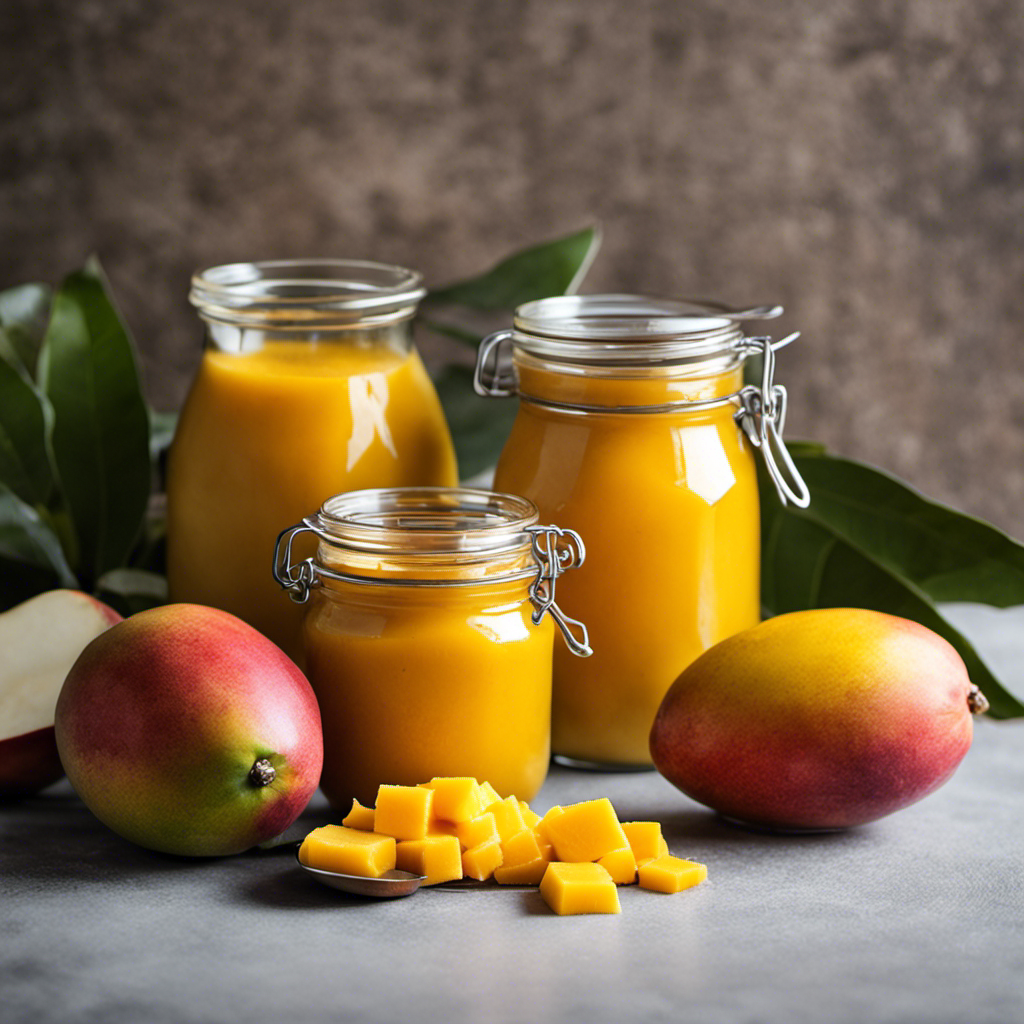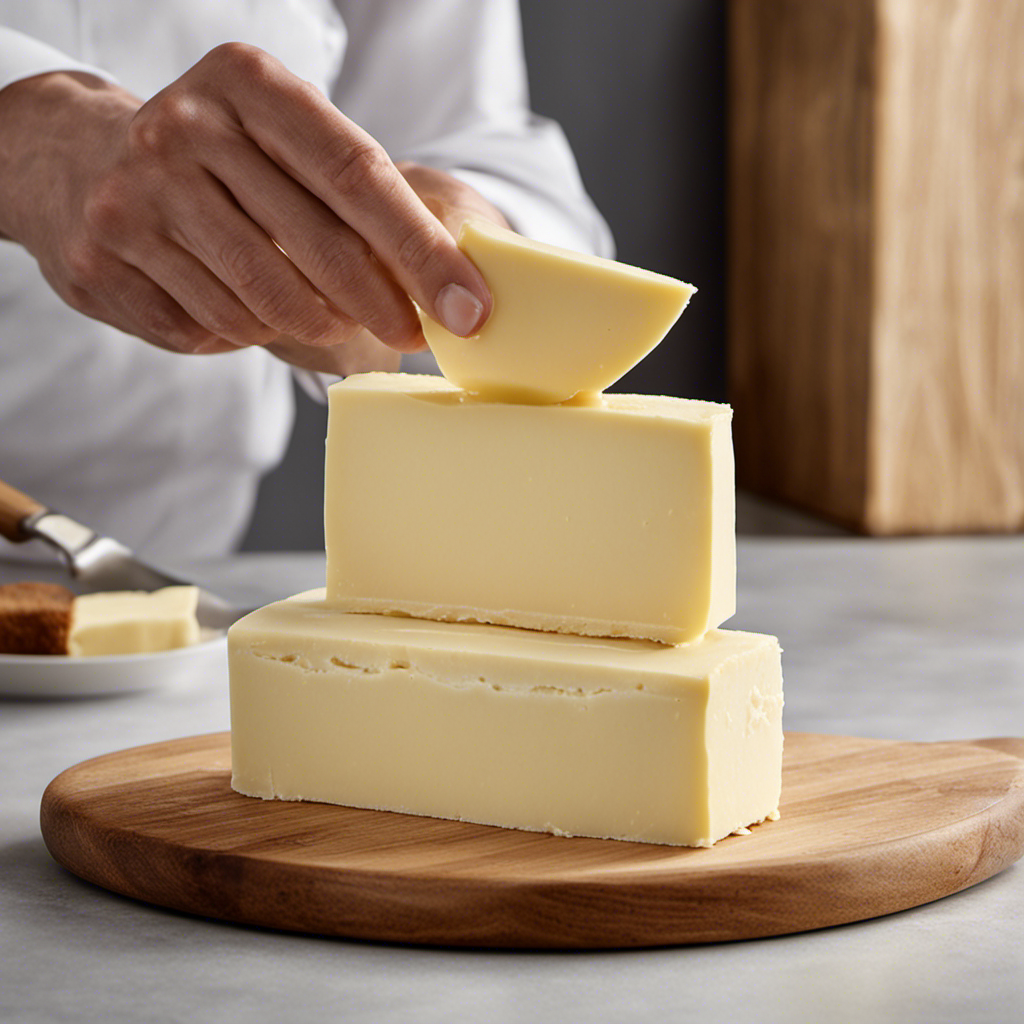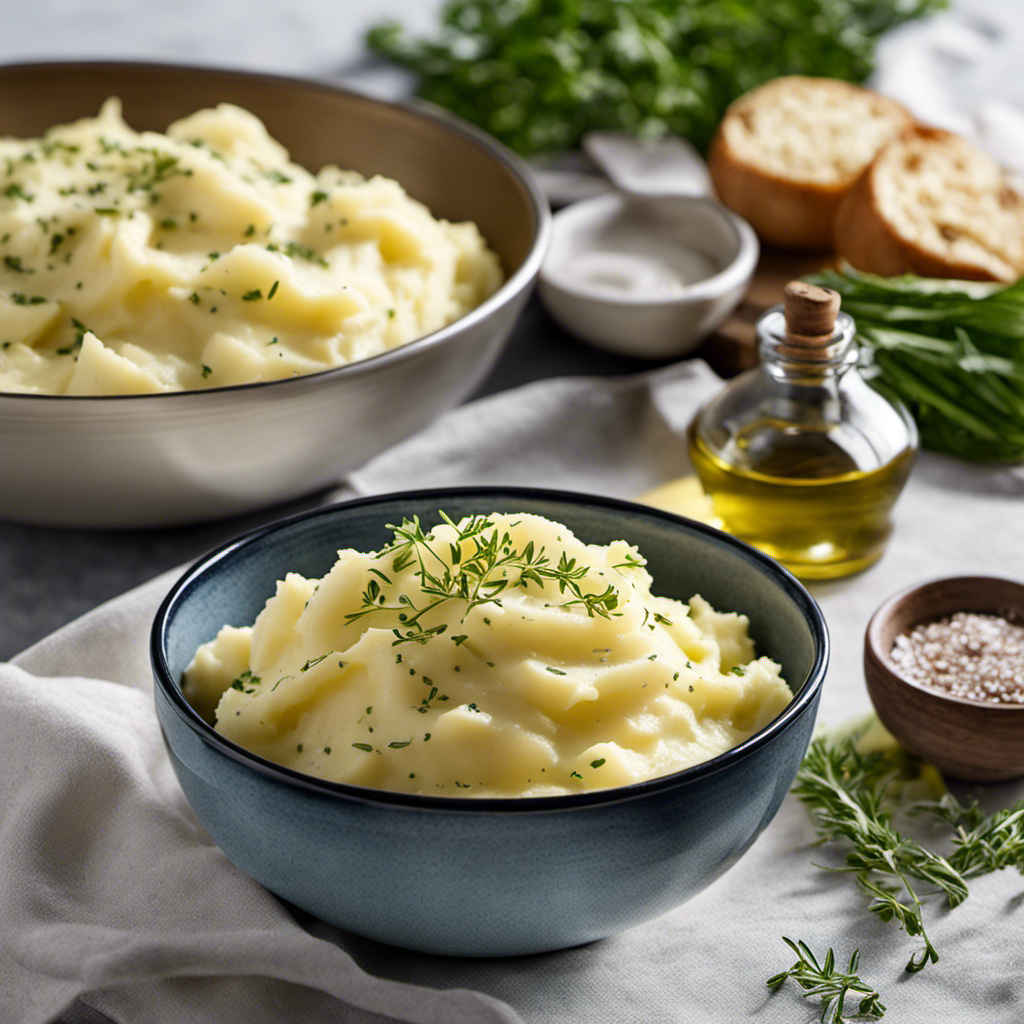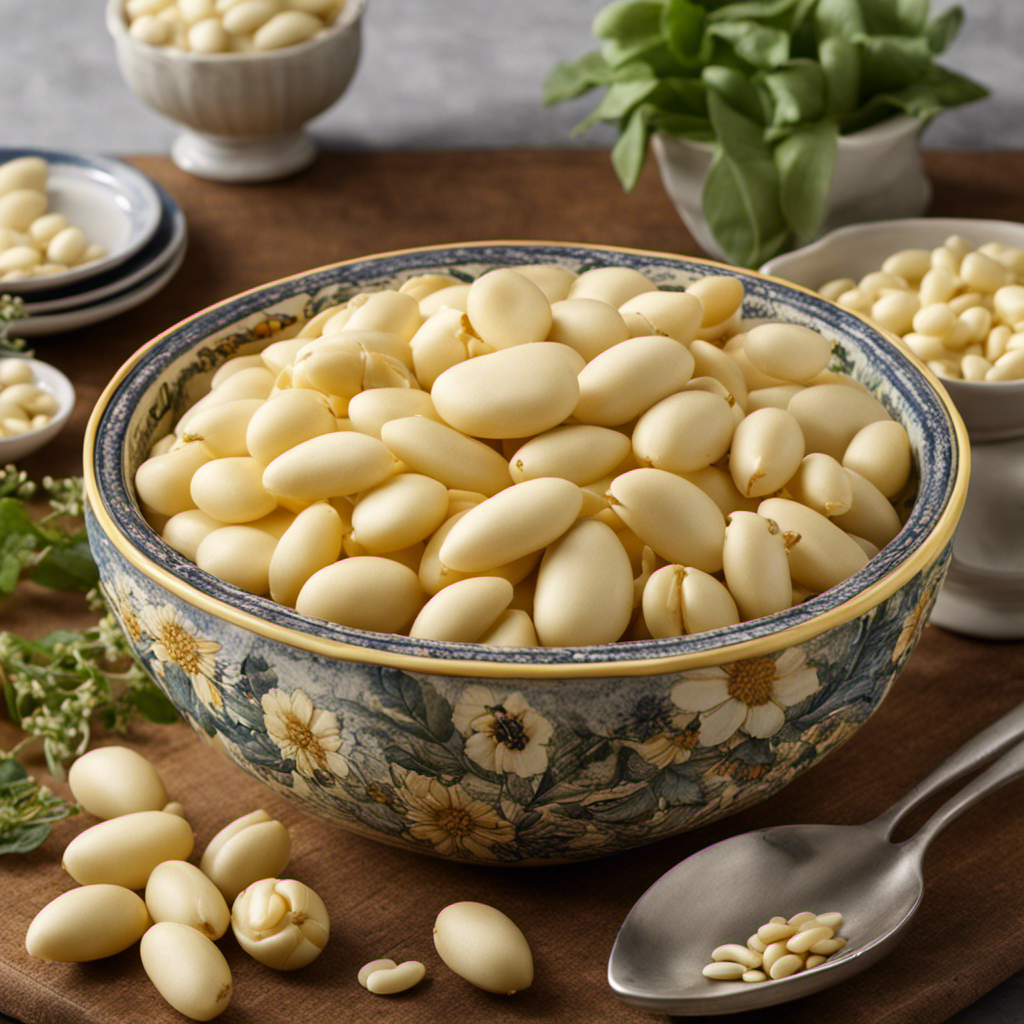I have uncovered the incredible revelation regarding the weight of a single tablespoon of butter. Get ready to be amazed!
In this article, I will reveal the precise measurements and scientific facts that determine the weight of this beloved ingredient. As a food scientist, my aim is to provide you with accurate information and educate you on the subject matter.
So, let’s dive into the world of butter weight and uncover the truth together.
Key Takeaways
- The weight of a tablespoon of butter can vary based on factors such as the melting point and packaging options.
- To convert tablespoons of butter to grams or ounces, multiply the number of tablespoons by the density of butter.
- Accurate measurement of a tablespoon of butter can be achieved by pressing it into the spoon and leveling it off.
- Common mistakes when measuring butter by the tablespoon include not considering the density variations and not using proper measuring techniques.
Understanding the Weight of a Tablespoon of Butter
Do you know how much a tbsp of butter weighs?
As a food scientist, I can provide you with precise and accurate information on this topic. The weight of a tablespoon of butter depends on various factors, including its melting point and packaging options.
Butter has a relatively low melting point, usually around 32 to 35 degrees Celsius. This means that it can easily transition from a solid to a liquid state when heated.
When it comes to packaging, butter is commonly sold in sticks or tubs. The weight of a tablespoon of butter can vary depending on the packaging option chosen. For example, a standard stick of butter usually weighs around 113 grams or 4 ounces, while tubs may offer different measurements.
Understanding these factors is crucial in determining the weight of butter in a tablespoon. Moving forward, let’s explore the other factors that can affect the weight of butter in a tablespoon.
Factors Affecting the Weight of Butter in a Tablespoon
To determine the weight of butter in a tablespoon, you can consider various factors.
These factors include the temperature of the butter, its density, and the specific brand or type of butter being measured.
The temperature of the butter affects its melting properties, which in turn affects its weight. Butter has a lower melting point compared to other fats, so at room temperature, it is usually solid. As the temperature increases, the butter begins to melt and its weight can change.
Additionally, the density of butter can vary depending on its composition. For example, clarified butter has a lower water content and therefore a higher density compared to regular butter.
Conducting a nutritional content analysis can also provide valuable information about the weight of butter in a tablespoon, as different brands or types of butter may have slightly different compositions.
Converting Tablespoons of Butter to Grams or Ounces
If you want to convert tablespoons of butter to grams or ounces, you can use a conversion chart or online calculator. Converting butter measurements in baking is essential for precise and accurate recipe execution. Here are five key points to consider when converting tablespoons of butter to grams or ounces:
- The weight of a tablespoon of butter can vary depending on its density and temperature.
- To convert tablespoons to grams, multiply the number of tablespoons by the density of butter (approximately 14.18 grams per tablespoon).
- To convert tablespoons to ounces, multiply the number of tablespoons by the density of butter (approximately 0.5 ounces per tablespoon).
- It is important to note that these conversions are approximate and may vary slightly depending on the specific brand or type of butter.
- If you prefer working with milliliters instead of grams or ounces, you can also convert tablespoons of butter to milliliters by using the density conversion factor (approximately 14.79 milliliters per tablespoon).
How to Measure a Tablespoon of Butter Accurately
To accurately measure a tablespoon of butter, you can press the butter into the spoon and level it off with a straight edge. This method ensures that you have an exact amount of butter for your recipe.
In terms of weight, a tablespoon of butter is equivalent to approximately 14 grams or 0.5 ounces. However, if you don’t have a tablespoon on hand, there are alternative ways to measure butter. For instance, you can use a kitchen scale to weigh the desired amount of butter in grams or ounces. Another option is to use butter sticks which are usually marked with tablespoon measurements.
By following these precise methods, you can ensure accurate measurements and achieve consistent results in your cooking or baking endeavors.
Now, let’s explore some common mistakes when measuring butter by the tablespoon.
Common Mistakes When Measuring Butter by the Tablespoon
When it comes to measuring butter accurately, it’s crucial to employ proper measuring techniques.
The density of butter can vary depending on factors such as temperature and brand, which can affect the accuracy of tablespoon measurements.
Understanding these variations and using precise measuring techniques is essential to ensure accurate and consistent results in your recipes.
Proper Measuring Techniques
Remember to use proper measuring techniques when determining the weight of a tablespoon of butter. Here are some guidelines to ensure accurate measurements:
- Use a standard measuring spoon: A tablespoon should be leveled, not heaped or rounded.
- Check the temperature: Butter should be at room temperature for accurate measurements.
- Convert measurements: If a recipe calls for grams or ounces, use a kitchen scale to measure the appropriate weight.
- Consider measuring equivalents: If you don’t have a tablespoon, use a measuring cup with markings for tablespoons.
- Use the displacement method: If you have a block of butter, cut it into tablespoon-sized portions and measure the weight.
By following these techniques, you can ensure that your measurements are precise and accurate, leading to better results in your recipes.
Happy cooking!
Butter Density Variations
If you’re using butter straight from the fridge, keep in mind that its density may vary compared to room temperature butter. Butter density variations can affect the accuracy of tablespoon measurements.
To measure butter precisely, it is important to consider its temperature and density. Butter is a semi-solid fat with a density range of 0.850 to 0.950 grams per milliliter (g/mL) at room temperature. However, when chilled, its density can increase, making it more compact. This means that a tablespoon of cold butter may weigh more than a tablespoon of softened butter.
To ensure accurate measurements, it is advisable to bring the butter to room temperature before measuring. This will help to minimize density variations and ensure consistent results.
Now, let’s delve into the accuracy of tablespoon measurements and how it can affect your recipes.
Accuracy of Tablespoon Measurements
To ensure precise measurements in your recipes, it’s important to consider the accuracy of tablespoon measurements. Ensuring measurement accuracy is crucial for achieving consistent and reliable cooking results. Here are a few key points to consider:
-
Use standardized measuring spoons: Invest in a set of measuring spoons that are accurate and calibrated. This will help you ensure consistent measurements.
-
Level off the tablespoon: When measuring ingredients, it’s important to level off the tablespoon to ensure accurate amounts. Use the back of a knife or a straight edge to remove any excess ingredient.
-
Convert tablespoons to grams: To achieve even more precision in your recipes, consider converting tablespoons to grams. This allows for more accurate measurements, especially when dealing with ingredients that have varying densities.
-
Be aware of ingredient variations: Different ingredients can have different densities, which can affect the accuracy of tablespoon measurements. For example, butter can have varying water content, resulting in different weights for the same volume.
-
Calibrate your measuring spoons: Over time, measuring spoons can become inaccurate. To ensure measurement accuracy, periodically check and calibrate your measuring spoons using a known weight.
Tips for Adjusting Butter Measurements in Recipes
When adjusting butter measurements in recipes, it’s important to keep in mind that using melted butter can affect the texture and consistency of the final product. To ensure accurate measurements, there are a few tips to follow.
Firstly, when a recipe calls for melted butter, it’s best to measure it in its solid form before melting. This ensures consistency and accurate proportions.
Secondly, if a recipe calls for a specific weight of butter, it’s helpful to know that 1 tablespoon of butter weighs approximately 14 grams or 0.5 ounces. This can be useful when scaling recipes up or down.
Lastly, if you prefer to use butter substitutes or spreads, make sure to check the label for their fat content, as it may differ from traditional butter.
Frequently Asked Questions
Can I Use a Different Type of Fat Instead of Butter in a Recipe?
Yes, you can use different types of fat substitutes for butter in a recipe. However, it’s important to consider the pros and cons of each type. Some may affect the taste or texture of the dish.
How Can I Measure Butter if I Don’t Have a Tablespoon?
If you don’t have a tablespoon, there are alternative measurements you can use to measure butter. Converting tablespoons to grams or ounces is a precise and accurate method for obtaining the desired amount.
What Is the Difference Between Salted and Unsalted Butter in Terms of Weight?
In terms of weight, the difference between salted and unsalted butter lies in the added salt content. Salted butter typically weighs slightly more due to the salt. However, the exact weight difference may vary.
Does the Temperature of the Butter Affect Its Weight in a Tablespoon?
The consistency of butter can affect its weight in a tablespoon. Softer butter may weigh slightly more than firmer butter due to its higher moisture content. The brand of butter is unlikely to significantly impact its weight.
Can I Use a Kitchen Scale to Measure Butter Instead of Using Tablespoons?
Using a kitchen scale to measure butter is a precise alternative to tablespoons. It allows for accurate measurements, especially when baking. Additionally, considering alternative fats like margarine or oil can offer flexibility in recipes.
Conclusion
In conclusion, the weight of a tablespoon of butter can vary depending on factors such as temperature and density. However, on average, a tablespoon of butter weighs approximately 14 grams or 0.5 ounces.
It is important to measure butter accurately in recipes to ensure the desired results. By following proper measuring techniques, such as using a leveled tablespoon and packing the butter tightly, you can achieve precise and consistent measurements.
Remember to adjust butter measurements accordingly in recipes for optimal flavor and texture.
